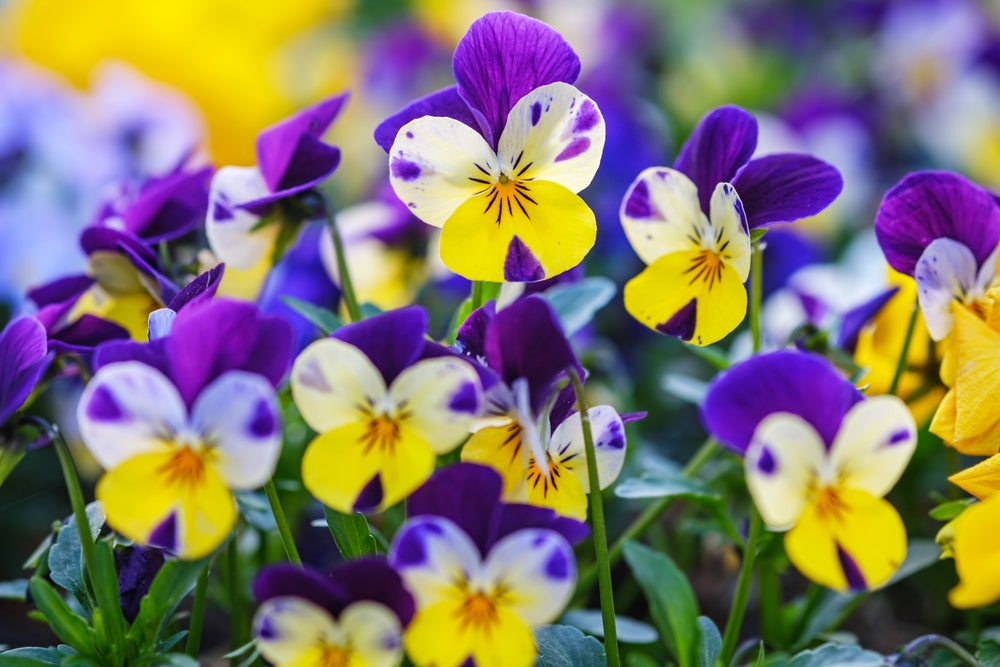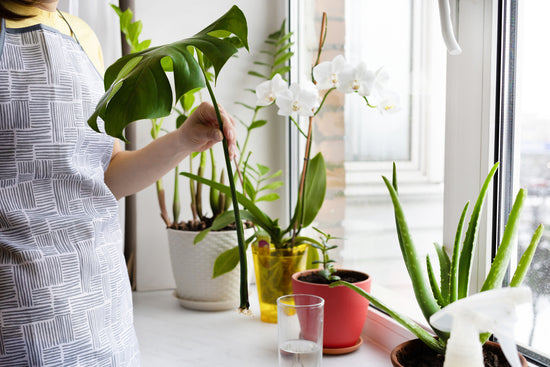The Viola flower, also known as the Violet, is a flowering plant belonging to the large family of Violaceae, which consists of over 680 different species. Its delicate yet very vibrant, violet blooms make for stunning additions to ornamental displays in gardens and even as cut flowers.
• Viola Flowers: Symbolism and Significance

The symbolism of the Viola flower goes beyond and breaks the barriers of cultures. It embodies modesty, humility, and faithfulness. Its delicate yet vibrant blooms often symbolize notions of purity and beauty, while its presence in literature and art symbolizes love, affection, and admiration.
Viola's significance lies in its ability to convey deep emotions and virtues, making it a cherished symbol in gardens and bouquets alike. In essence, the Viola flower symbolizes the enduring qualities of love, beauty, and grace. When trying to convey your emotions through flowers, the Viola might just be your best bet because of its deep rooted significance and everlasting showcase of love and all things bright.
• Growing Conditions for Viola

Viola plants thrive in cool, moist environments with well-drained soil and partial shade. They are versatile flowering plants and can grow in various conditions, including gardens, borders, containers, and even as ground cover.
Violas prefer slightly acidic to neutral soil pH (around 6.0 to 7.5). In hotter climates, if you provide them with afternoon shade, it could also help prevent wilting.
• Care Tips for Viola Flower
1. Watering
Make sure to maintain consistently moist soil, ensuring it doesn't become waterlogged. Water deeply when the top inch of soil feels dry to the touch. Also remember to avoid overhead watering to prevent foliage diseases. Instead, water at the base of the plant and get the Viola plant the water it needs.
2. Fertilization
Apply a balanced fertilizer with equal parts nitrogen, phosphorus, and potassium (NPK). Fertilize every 4-6 weeks during the growing season to promote healthy growth and abundant flowering. Use a slow-release fertilizer for prolonged nutrient availability.
3. Deadheading
Regularly remove spent flowers to encourage continuous blooming throughout the season. Pinch off faded blooms just above the nearest set of healthy leaves to stimulate new flower production.
4. Mulching
Apply a 1-2 inch layer of organic mulch, such as compost or shredded leaves, around the base of Viola plants. Mulch helps retain soil moisture, suppress weeds, and maintain a consistent soil temperature.
5. Pest and Disease Control
Monitor plants regularly for common pests like aphids, slugs, and snails. Use insecticidal soap or neem oil to treat pest infestations as soon as they're detected. Maintain good air circulation around plants to reduce the risk of fungal diseases, such as powdery mildew and leaf spot. Remove and dispose of any infected plant debris promptly to prevent the spread of diseases.
Buy Neem Oil
6. Pruning
Trim back any leggy or overgrown stems to promote bushier growth and maintain a tidy appearance. Prune Viola plants lightly after each flush of blooming to encourage continuous flowering.
7. Winter Care
In regions with mild winters, Violas may continue to bloom through the cooler months. Provide protection from frost by covering plants with a frost cloth or bringing containers indoors during freezing temperatures.
• Growing the Flower from Viola Seeds
Growing Viola from seeds is a rewarding experience, offering a wide array of colors and varieties to choose from. Here's how to do it:
1. Seed Starting
Start Viola seeds indoors about 8-10 weeks before the last frost date in your area. Use seed-starting trays filled with a well-draining seed-starting mix.
2. Sowing Seeds
Sow Viola seeds thinly on the surface of the soil and lightly press them in. Keep the soil consistently moist but not waterlogged.
3. Germination
Viola seeds typically germinate in 10-15 days when kept at a temperature of around 60-65°F (15-18°C).
4. Transplanting
Once the seedlings have developed a few sets of true leaves, transplant them into individual pots or containers filled with potting soil.
5. Hardening Off
About 1-2 weeks before transplanting outdoors, gradually acclimate the seedlings to outdoor conditions by exposing them to increasing amounts of sunlight and outdoor temperatures.
6. Outdoor Planting
Plant Viola seedlings outdoors after the danger of frost has passed, spacing them about 6-12 inches apart, depending on the variety.
7. Maintenance
Continue to care for Viola plants as described earlier, providing them with proper watering, fertilization, and protection from pests and diseases.











